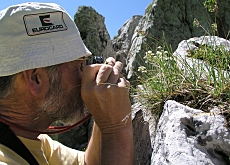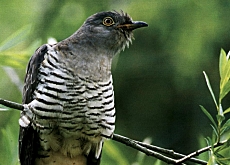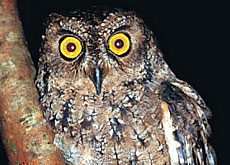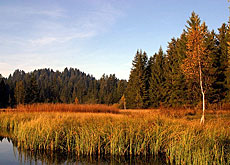Scientists send mixed biodiversity message

The decline in Swiss biodiversity has stabilised, but it remains fragile and certain species of animals and plants are endangered, say biodiversity experts.
The Swiss Environment Agency presented the first overview of its pioneering Swiss Biodiversity Monitoring (BDM) programme ahead of World Environment Day on Monday. It paints a mixed picture of the nation’s biodiversity.
The publication of the extensive BDM report comes after five years of biodiversity monitoring and data-collection at 2,000 different sites throughout the country.
“Switzerland has an incredibly diverse biodiversity, with about 50,000 species of animals and plants,” explained Bruno Oberle, the director of the Swiss environment agency. “They are natural riches that we need to manage and develop.”
The overall stabilization of its biodiversity can be observed, for example, in the total number of vertebrates – mammals, amphibians, reptiles, birds and wild fish – that has been constant over the past eight years.
Losses of species over this period, such as the disappearance of five kinds of bird, have been compensated by the arrival of new species, such as the wolf and the European bee-eater.
Concerns
Despite this balanced picture, there are several worrying trends. Many endangered species are only present in limited numbers at a few different sites, which are too small in size to prevent their decline.
The BDM data also reveals major regional differences in biodiversity.
“We have surprisingly high biodiversity in the Alps and its foothills, but much lower in the Plateau region, where economic activity is greater. This is where we need to concentrate our efforts in the future,” Oberle told swissinfo.
The varied mountain landscapes create a range of different habitats that sustain much higher levels of biodiversity.
The experts found at least 80 different species of diurnal butterflies in the Zermatt valley, for example. They were also surprised to discover that the greatest diversity of plant species is actually on north-facing rather than southern-facing alpine slopes.
Plateau
But in other parts of the country the situation is more critical.
The Plateau region, which experiences greater urbanisation and intensive agricultural activity, has much lower biodiversity and many of the “red list” endangered species.
However, the region still has a good “ecological” potential, says Conrad Widmer, responsible for ecological subsidies at the Federal Agriculture Office.
The BDM scientists found large numbers of species on protected land in the Plateau region, such as prairies and pastureland, which are not cultivated intensively.
The compensation measures currently taken by the agricultural office to increase the ecological quality of prairies and pastures could improve the situation, says Widmer.
Measures
Switzerland’s strategy for preserving biodiversity is varied and includes federal inventories to conserve the quality of biotopes; “red lists” of endangered species; protected areas; a national ecological network to share Swiss “genetic heritage” and special action plans for endangered species.
Oberle is optimistic that, on the basis of the programme’s findings and by developing these measures, Switzerland can reach the objective set at the Johannesburg Earth Summit to reverse the decline in biodiversity by 2010.
“But I fear that we will be one of the few countries that does so,” he added.
swissinfo, Simon Bradley
Biological diversity, or biodiversity, is the number of species – animals, plants and microorganisms – found in a certain area. The concept also includes the genetic variability of these species, since no organism is absolutely identical to any other. Biodiversity also covers the variety of communities in which these species live.
The rapid decline in biodiversity worldwide is largely due to human activities: urbanisation and intensive agriculture.
At the Earth Summit in Rio in 1992, world leaders set targets to save the planet from species extinction with the Convention on Biological Diversity – a non-binding treaty which sets out goals, policies and general obligations.
Ten years later at the Johannesburg Earth Summit, they agreed to try to reverse the decline by 2010.
Scientists estimate that between ten and 100 million plant and animal species now exist on the planet.
According to the World Conservation Union (IUCN), 27,000 species disappear worldwide every year and 24 per cent of mammal and 12 per cent of bird species are now critically endangered.
The Swiss signed the United Nations convention on biodiversity in 1994.

In compliance with the JTI standards
More: SWI swissinfo.ch certified by the Journalism Trust Initiative




You can find an overview of ongoing debates with our journalists here. Please join us!
If you want to start a conversation about a topic raised in this article or want to report factual errors, email us at english@swissinfo.ch.